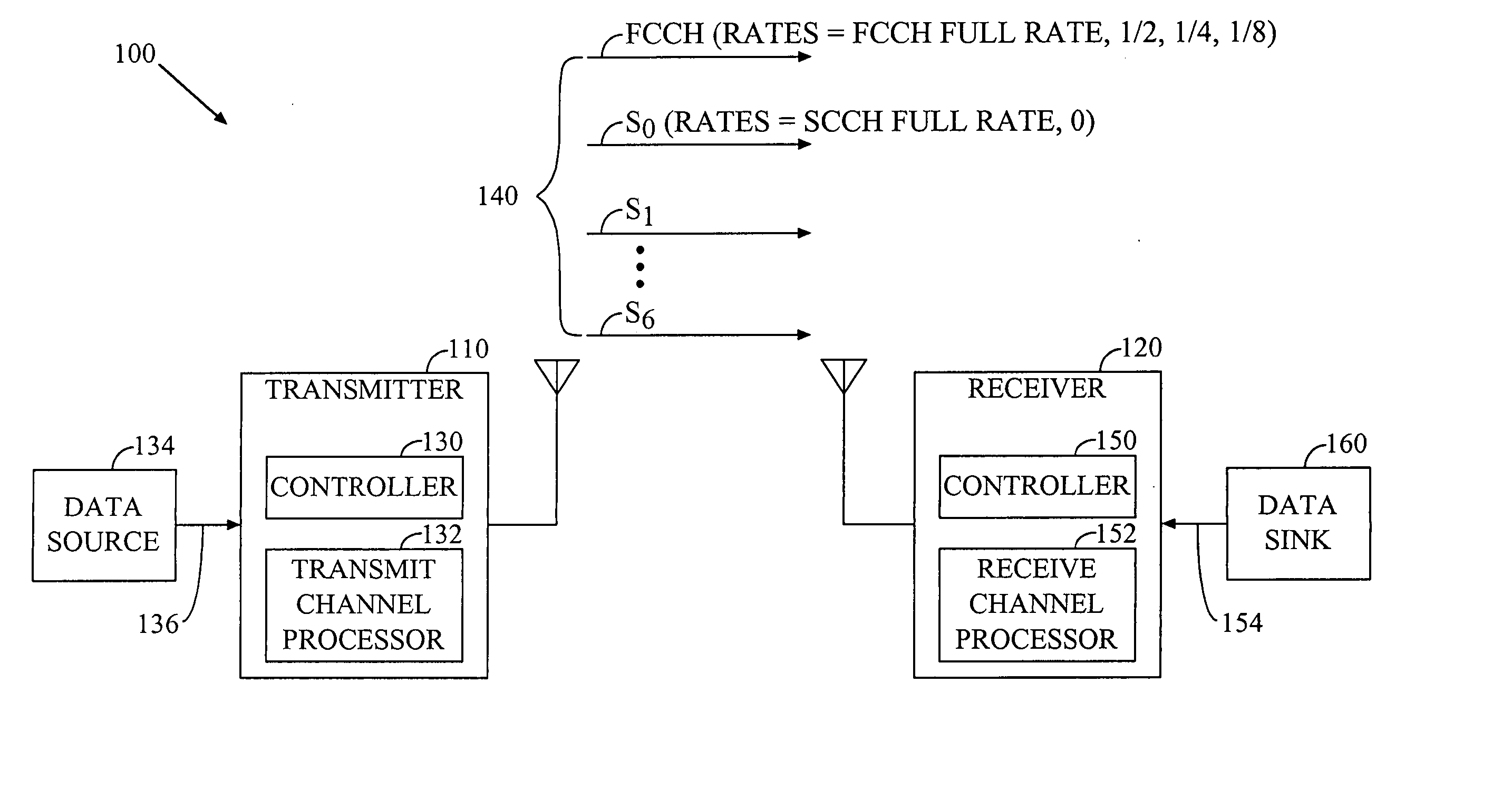Method and apparatus for IS-95B reverse link supplemental code channel frame validation and fundamental code channel rate decision improvement
a reverse link and frame validation technology, applied in the field of wireless communication systems, can solve the problems of frame waste of data bandwidth, adversely affect the entire frame, corrupt transmission rate information, etc., and achieve the effect of improving the efficiency of traffic channel bandwidth, and improving the accuracy of rate determination
- Summary
- Abstract
- Description
- Claims
- Application Information
AI Technical Summary
Benefits of technology
Problems solved by technology
Method used
Image
Examples
embodiment
Exemplary Method Embodiment
[0061]FIG. 4 is an illustration of a method 400 corresponding to the exemplary embodiment of the present invention, wherein receiver 120 receives reverse-link traffic channels operating in accordance with IS-95B. The principles embodied in exemplary method 400 also apply to any wireless data communication system operating in accordance with IMT-2000. The method steps of FIG. 4 are first described below, and then, a rationale supporting the method steps is provided. Steps 305, 310, 315, and 320 described above in connection with FIG. 3 are collectively represented in a single initial step 405 of method 400.
[0062] Next, at a decision step 410, it is determined whether the likely FCCH rate is at the FCCH full rate. If the likely FCCH rate is at the FCCH full rate, the decoded FCCH frame is assumed valid for use at the next processing stage, and flow proceeds to a step 415.
[0063] At step 415, decoded frames associated with received SCCHs are validated based ...
PUM
 Login to View More
Login to View More Abstract
Description
Claims
Application Information
 Login to View More
Login to View More - R&D
- Intellectual Property
- Life Sciences
- Materials
- Tech Scout
- Unparalleled Data Quality
- Higher Quality Content
- 60% Fewer Hallucinations
Browse by: Latest US Patents, China's latest patents, Technical Efficacy Thesaurus, Application Domain, Technology Topic, Popular Technical Reports.
© 2025 PatSnap. All rights reserved.Legal|Privacy policy|Modern Slavery Act Transparency Statement|Sitemap|About US| Contact US: help@patsnap.com



